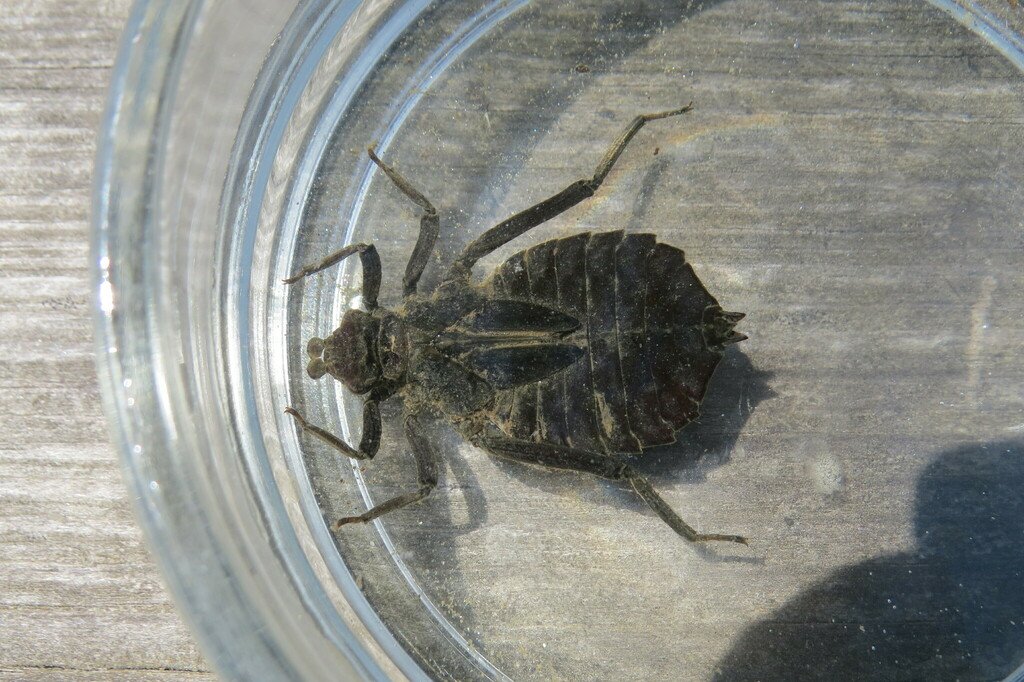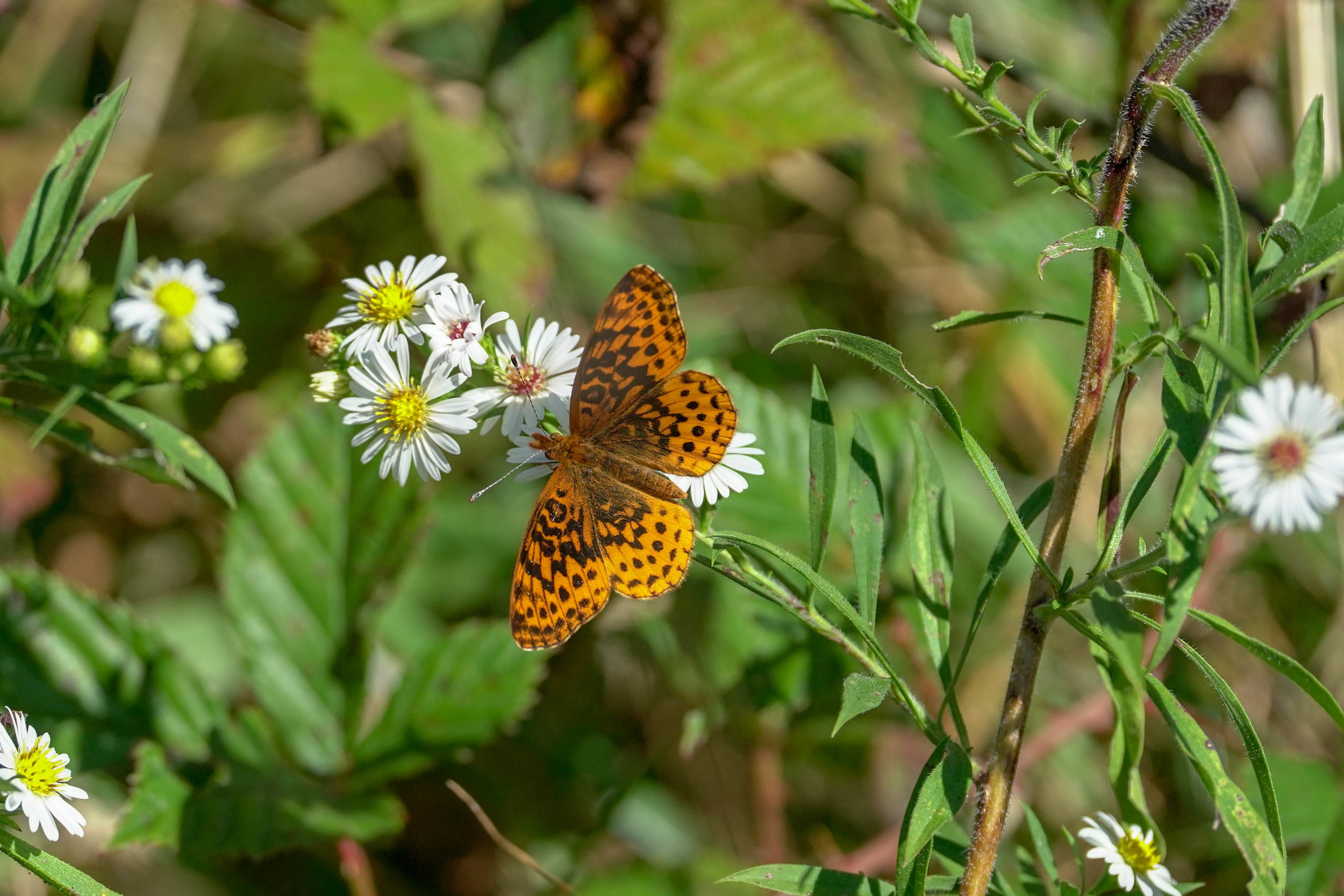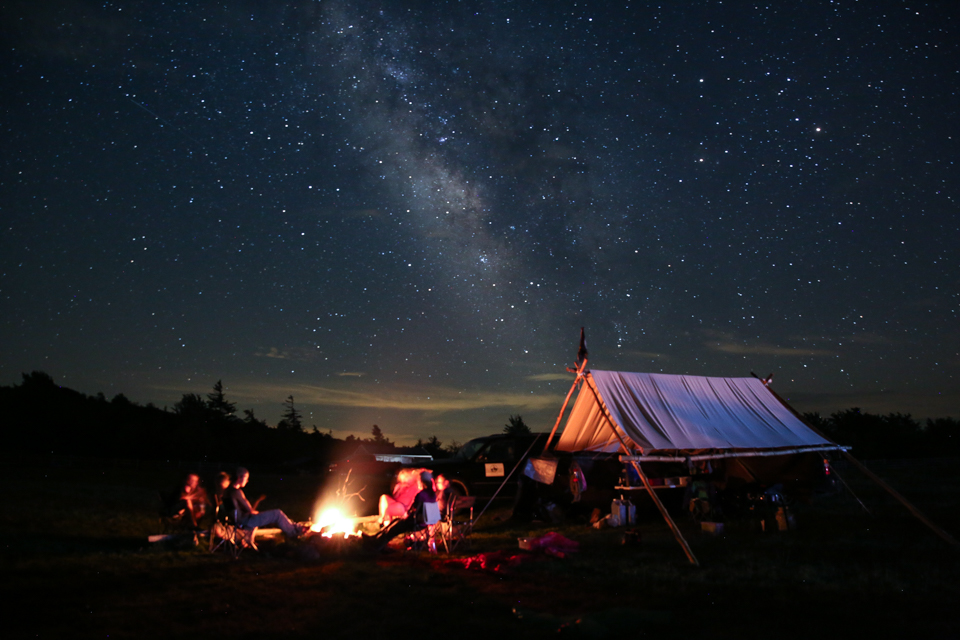

Recent Sightings of the Blue Ridge
Are you ready for the Naturalist Rally? Read about some of the recent finds during our programs around the Blue Ridge Discovery Center and beyond, and learn how to improve your chances of seeing some fascinating species before a weekend immersed in the Appalachian spring.

Butterflies and Community Science
Butterflies are one of the most beautiful elements of the natural world, and scientists now recognize that they can also serve as one important indicator of the health of ecosystems.

The Secret Life of Butterflies
With such striking coloration, this meadow fritillary (Boloria bellona) easily stands out against its floral backdrop when feeding and in flight. However, it needs to be a little more inconspicuous at times of rest.


An August Nature Ramble
We have enjoyed exploring the mountains around Boone for its considerable natural wonders. In August the birds have mostly finished breeding and reduced their vocalizations, so we enjoy watching insects and anything else in the natural world that draws our attention.
I was surprised to find that in August the most common large butterfly near Boone is the pipevine swallowtail.

Join BRDC for the Summer Naturalist Rally!
EXPLORE THE NATURAL HISTORY OF MOUNT ROGERS, THE CROWN JEWEL OF SOUTHWEST VIRGINIA
The Summer Rally gives us a chance to explore Mt. Rogers in a different season. We have assembled a wide variety of field trips with leaders who are experts in their field and able to make it understandable and interesting for everyone from inquisitive amateurs to accomplished naturalists.

Mount Rogers Wilderness Camp
We finished off summer camp season by heading up the mountain and exploring the habitats of Mount Rogers with a basecamp at the Scales on Pine Mountain. Unfortunately we timed it with a massive system that brought three days of solid rain!!

Deciphering Nature's Signs
So much is happening in nature and in our human constructed world that we tend to ignore some of the most obvious events of the natural world. Plus there are literally thousands of sights and sounds vying for our attention and it takes a significant effort of will to focus and be observant. A certain training of the mind helps in watching even subconsciously for important clues and selecting them from the background "noise."

Lepidopteras on Display
In late July on our VA farm, the predominant color of the landscape is GREEN! But our 10 year old pollinator field is now predominantly yellow with the blooms of oxeye sunflower. This is a table set for the multitude of mouths of the lepidopterans (butterflies and moths), which are a prime food for birds.

Educational resource planted last Fall shows us life!
Last fall, BRDC, led by Sarah Osborne, planted a brand new butterfly garden on the grounds of the Galax High School as part of the Fall 2014 Middle School Enrichment Program. The results a year later are astounding!

Biking for Natural History
Although the typical means of enjoying nature would be by walking, I have found that biking can be a great way to find natural wonders in any area which has biking trails. The rails to trails paths are ideal since they tend to be easy to ride while watching the passing nature show. One of our favorites is the New River Trail State Park in VA which has repaid repeated rides on the same trail segment to spot daily and seasonal changes in natural history.

BUTTERFLIES OF SULLIVAN SWAMP, GRAYSON HIGHLANDS STATE PARK
Our 2012 collaboration finished up in January of 2013. This project was a partnership with the Grayson County High School 2nd year art class and BRDC’s Project SiteSection. With this poster we will be helping to spotlight the globally unique habit that is Sullivan Swamp by illustrating the full list of butterflies documented by the SiteSection program.